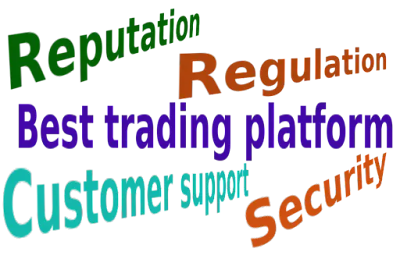What is leverage in forex
Leverage in forex is an essential way of forex trading which allows traders to control a more significant amount of currency only with small investment. In simple terms, leverage enables traders to borrow capital from the broker to amplify their trading positions. But keep in mind that leverage in forex trading is a double-edged sword that can boost your profits or lead to significant losses if not used wisely. Anyway, we'll explore in this article the best use of leverage in forex trading with its advantages and disadvantages, and I will show you how to calculate leverage and provide tips for using leverage safely.
What is leverage in forex trading?
Forex trading is a form of investment that allows traders to buy and sell currencies with the aim of making profits. However, traders often use leverage tool that amplifies the potential profit to maximize returns but also increases the risk of loss. So what is leverage in forex trading? Leverage is simply the borrowing of funds from the broker to control a more significant amount of currency with a smaller investment and to trade a larger position than the trader's account would normally allow for.
Leverage is the ratio of the trader's own capital to the amount of borrowed capital from the broker. For every $1 of the trader's own capital, the broker provides $100 in borrowing. For example, a trader with a position worth $10,000 may use leverage of 1:100 to control a position worth $1,000,000. So in this article, we will also explore how leverage works, its benefits and risks, and how to manage it effectively.
How does leverage work?
Leverage works by allowing traders to control their larger positions in the market using only a smaller amount of capital. This borrowing power comes from the broker, who lends the trader the additional capital needed to increase the trading position. For instance, a trader with a $1,000 trading account and a leverage of 100:1 can open a position worth $100,000. The broker provides the remaining $99,000 as leverage.
If a trader wants to buy $100,000 worth of currency but only has $1,000 in their account, the broker can lend the trader the remaining $99,000 to make the purchase. I hope you get the idea.
The potential profits or losses are then magnified by the amount of leverage used. The profit is increased if the trades go in the trader's favor. However, if the trades go against the trader, the losses are also magnified. Traders have to pay interest on the borrowed funds because the leverage is not free. This interest rate depends on the currency pair being traded and the broker's policy. Most brokers usually offer interest-free leverage, but they often charge higher spreads.
Advantages of leverage in forex trading
Leverage in forex trading has several advantages:
The main advantage of using leverage in forex trading is the ability to make significant profits with only a small capital. Leverage can help us diversify our portfolio by opening multiple positions simultaneously. This can help us improve the overall returns and mitigate the risks of any single trade. For instance, if we have only $1,000 and a leverage of 100:1, we can make a profit of $1,000 if the price of the currency pair moves by just 1%.
With leverage, we can start trading forex with a small amount of capital, as we only need to invest a fraction of the total value of the trade. Leverage provides us with flexibility in our trading strategy as well. With the ability to control a larger position, we can take advantage of short-term market movements and capitalize on opportunities that would not be available with lower leverage. Leverage also allows us to diversify our portfolio and invest in multiple currency pairs.
Disdvantages of leverage in forex trading
While leverage has its advantages, it also increases the potential risks. The main disadvantage of using leverage in forex trading is the possibility of losing more than the initial investment. For example, a trader with $1,000 and a leverage of 100:1 can lose $1,000 if the price moves against the trade by just 1%.
Another disadvantage of using leverage in forex trading is the possibility of a margin call. A "margin call" occurs when the trader's account balance falls below the required margin level. The broker may then close some or all positions to avoid further losses.
leverage has also some significant drawbacks, it can lead to emotional trading, as traders may feel a sense of urgency to make a profit to recover their losses. Leverage magnifies both profits and losses. If a trader's position goes against him, the losses can quickly exceed the amount of capital in the account, potentially leading to a margin call or even a complete loss of the account. Most traders misuse leverage while trading in the forex market, taking on positions that are too large or risking too much capital, which can lead to a significant loss.
how to choose the best forex broker
How to Calculate Leverage in Forex Trading
The formula for calculating leverage is:
For example, if a trader decides to buy $100,000 worth of currency and has only $1,000, the leverage would be calculated as follows:
As you can see, we are using 100:1 leverage, as we are controlling $100,000 worth of currency with a $1,000 investment. It's very important to know that some brokers offer varying levels of leverage, while other brokers offer leverage as high as 1000:1. However, using these high leverage levels can be very risky and lead to significant losses if not used carefully and wisely. If you need help feel free to contact us on this page.
Tips for using leverage safely
Before using leverage, you should have a clear understanding of the risks associated with it. So first, you should use low leverage levels and only increase them gradually as you gain more experience and confidence using trading platform in your trading strategy.
While leverage can provide significant benefits, it's essential to use it safely to avoid significant losses. To manage leverage effectively, you should first define your risk tolerance and set stop-loss orders to limit potential losses. You should also avoid overtrading and use leverage in moderation. It's important to note that most brokers offer different levels of leverage, so you should choose a broker that offers leverage that is suitable for your trading system and risk tolerance.
To manage leverage in forex trading, here are some tips for using leverage safely in forex trading, you should:
- Have a clear trading plan and stick to it.
- Choose the right leverage ratio that suits your trading style and risk tolerance.
- It's very important to use stop-loss orders to limit the potential losses. Stop-loss orders can help you minimize your losses by automatically closing a position if it reaches a certain level.
- Use proper position sizing: proper position sizing is critical when using leverage. You should ensure that you only risk a small percentage of your account balance on any single trade.
- Avoid over-leveraging and keep your eyes on the margin level. you should use it in conjunction with other tools and techniques, such as scalping, technical analysis, hedging.
- Review regularly the trading performance and adjust the leverage accordingly.
- You should avoid emotional trading and stick to your trading plan. It is crucial to remain disciplined and not let emotions cloud judgment when using leverage.
Conclusion
Leverage is still an essential concept in forex trading that allows traders to control larger positions in the market than their available capital. While leverage can provide significant benefits, it also increases the potential risks, so traders should use it wisely. Traders should take the time to learn how to use leverage effectively. It's crucial to use it safely and carefully to avoid significant losses. With the right approach and discipline, leverage can be a valuable addition to any trader's toolkit.
In summary, leverage is a powerful tool in forex trading, but it requires careful consideration and risk management. By understanding the risks associated with leverage, using low leverage levels, setting stop-loss orders, using proper position sizing, and avoiding emotional trading, traders can improve their trading performance and achieve their financial goals.




